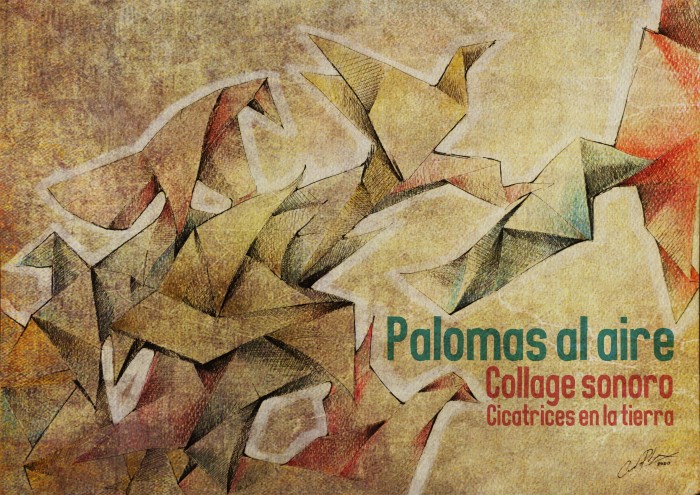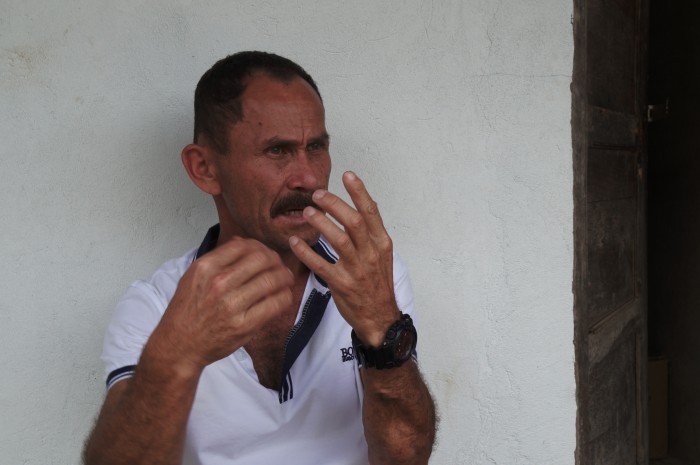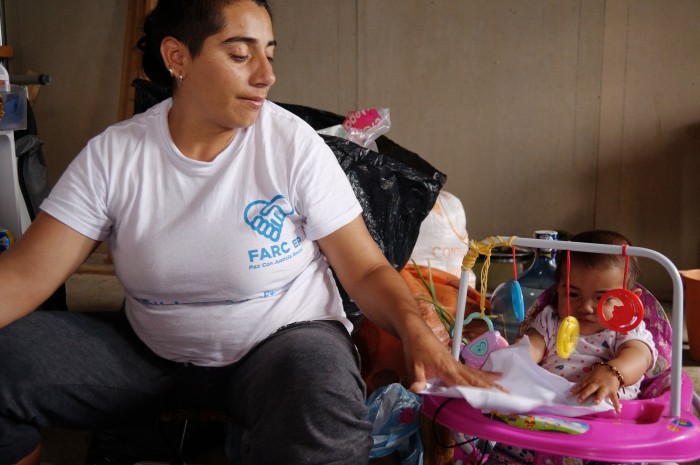We have thought about this crowdfunding campaign with Goteo as a unique and important opportunity for us to reach out audiences that, otherwise, wouldn’t be able to know about the project. Through this platform, we will give more visibility to the film in such a way that we can create a global community that shares our same interests and ideals. Landscars does not only contribute to the documentary film in Latin American, but even more importantly, we believe it opens a window that inquires and questions a complex human problem such as the future of those who stand up in arms against the State and now look forward to their reincorporation into society, and to participate in politics.
However, looking at the reality of the production of independent documentary films in Colombia, added to the fact that this project addresses a sensitive topic to the eyes of those who manage the resources for this kind of production, we were forced to look for other channels such as Goteo. With your help, we will not only fill in the void of the post-production process (editing and finishing of the movie).
Project references
After the plebiscite held on October 2, 2016, we accompanied the people in Bogotá that came out to the streets to defend the possibility of peace, the same way it happened in other cities in the country. This mobilization, encouraged by young people singing songs and slogans to the sound of music, plus the more than 100 people camping outside the city's main square pressured the political negotiation. This concluded with the signing of a new peace agreement 45 days later. Thus, a tradition of ending social conflicts through violence was subverted.
With the first steps of the Agreement’s implementation, the door to reincorporate more than 10 thousand former combatants was opened. Following our filmmaker spirit, which guided us through the city, we wanted to get to know what started happening in the rural zones called ‘zonas veredales’: the citadels that gathered the former guerrilleros in their reincorporation to civil life. This fascinating task has taken place in the last two years and has allowed us to listen to their life stories, and see their daily life practices.
They also trusted us their dreams and expectations. We asked them if it was worth it to be members of a guerilla. No matter the answer, we saw them remake their lives as parents, and we attended interesting socio-political processes from the depths of the FARC community. Security for them has always been uncertain and now is not the exception since 150 of them have already been killed. The lack of commitment from the current government sure doesn’t help.
Fabián has been in a civil reincorporation process for two years and a half. He visits Fragments, an ‘anti-monument’ in Bogotá, a symbolic space whose floor is made out of molten weapons that belonged to all the former FARC-EP combatants. There, he stops and thinks about the contribution of his weapon and remembers his sister, who died at 18 in the guerrilla. These scars are part of the emotional and physical traces that are also present in other former combatants’ memory.
Main features and goals of the crowdfunding campaign
Social commitment
With Landscars we are contributing to achieve diverse SDGs, specifically the 5 and 16, which are related to the peace agreement. As it will be seen in the documentary, inside the FARC's structure, the role of women in war and the negotiation of the agreements had its place in the political and organizational decision-making. This can be seen after the reincorporation of former combatants whom, as Janeth says, still maintain the egalitarian ideal in their relationships with their men comrades. This sort of living takes place in everyday life (in the task distribution) and in the possibility of women to run as candidates for popular election posts.
Another fundamental objective of the peace agreement is to search for a “stable and lasting peace.” This search begins by making a reality that the State has full monopoly over weapons and by reinforcing democratic institutions through State’s presence in rural areas that were affected by the FARC (Colombian guerilla that fought the government for more than 50 years). Furthermore, with the agreement, the intention is to deal with the roots of the problem of land tenure to contribute to the integral rural development of these communities.
However, after three years of the implementation of the peace agreement signed between the Colombian state and the FARC, the setbacks increase. The lack of commitment of the current government with rural development is to be blamed for it. It is necessary to raise public awareness of this problem and citizens must participate actively in the making of a “stable and lasting peace.”




Why this is important
Project motivation and to whom is it aimed to
Although the initial motive was circumstantial (to register, as a filmmaker, the response of people in the city to the risk in which the peace agreement was), later it transformed into a socio-political inquiry regarding FARC's ethos: who they are, what they lived and started living in this phase, and what our characters think.
Collaterally, there are formal explorations that try to integrate ethical and aesthetic dimensions.
This documentary is aimed at a broad audience, at the high school level, who can discern beyond the dualistic prejudices between “good and bad” built by media regarding the actions of insurgent groups that were considered by the state for a long time as terrorists, even during the negotiation process of the peace agreement, since 2014.



Team and experience
Author
My work as a documentary filmmaker refers to experiences with "common people", authentic people almost always of a humble origin: such as street vendors that make edible products, to later sell them to their colleagues while walking through downtown Medellín (“Róbalo with Arepa”, 1990) or on a motorcycle in its surroundings (“The Devil and the party ”, 1991), and watchmen —security forces— (“Sand Times”, 2008) that become vigil at night in dark buildings or small barracks, facing solitude in creative forms or imagining fantastic scenes.
I’ve filmed empiric historians, parties, and protests in “Para verte mejor America Latina” (To See You Better Latin America). And now, with this project, members of the FARC guerilla come from deep parts of Colombia. Members of this movement lived for 20 or more years with the illusion of a dignified communal and solitary life, especially for people that come from the countryside.
I started these searches in France when I was 35 years old, hand in hand with Jean Rouch. Although my first “maître fou” was Luis Alberto Álvarez, a cinephile humanistic priest from Medellín, who encouraged me to abandon my job as a math professor, to explore the cinematographic path.
The concern for encounters and dialogue made me undertake a journey of visits to my six siblings and my father to film “De(s)amparo, polifonía familiar” (Abandonment, Family Polyphony, 2002).
Crew
Land Scars is an independent and autonomous production. Its associate co-producers are “Guateque Cine”, postproduction and sound studio (https://guatequecine.com), led by Diana Carolina Martínez. Also, family and friends have joined, my children, Sara and Martín, and several students from the National University’s Film School: Ana María Ortiz, on the production, Andrés Pedraza, on the web design and, recently, Yesid Villamizar on the crowdfunding campaign.
There is a team that accompanies the director on the implementation and diffusion of the campaign in Goteo. All of them are professionals in the audiovisual and humanities areas.
• Valentina Pernett Plazas (anthropologist and magister in Latin-American Studies) assists in the resource management. She is going to coordinate the diffusion between friends, acquaintances, family, neighbors, users and institutions.
• Yesid Villamizar is the community manager and is also in charge of diffusion through analogue media, helps with content for Facebook and Twitter, through the hashtag #landscars
• Sara Fernández will collaborate generating and sharing the content for Instagram, particularly video clips. She will also be in charge of developing the publishing calendar for other contents of the campaign.
• Regarding the community involved, we have the endorsement of the Colombian Corporation of Documentary Filmmakers (Alados), of which the director is a member of. The project participated this year in the “project clinic” organized by the Corporation, where important logistical and conceptual contributions were received. Also, the communications team of Alados is helping us with the launching and following of the campaign.
• There are other institutions that, from different perspectives, support and share activities related with the peace agreement and its implementation. In several of them we have allies.








































